Sign up for The Wild
We’ll help you find the best places to hike, bike and run, as well as the perfect silent spots for meditation and yoga.
You may occasionally receive promotional content from the Los Angeles Times.
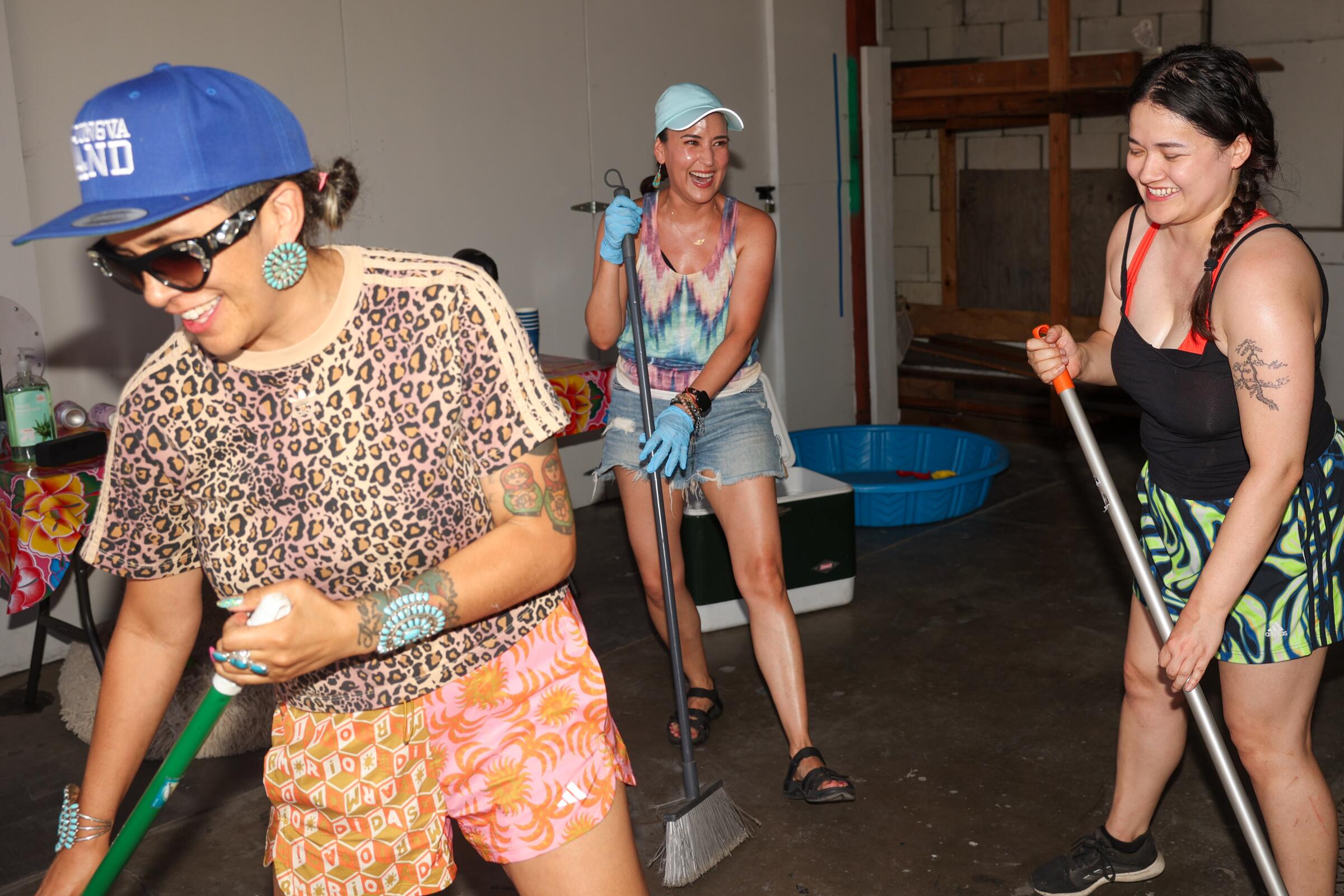
On a sweltering July afternoon in Echo Park, Miranda Due approached a table topped with a trio of flavored syrups and a spread of toppings: diced pickles, Kool-aid powder and gummy bears. Behind it, Dria Yellowhair pulled a pre-filled cup of crushed ice from a cooler, and asked Due what flavor she wanted. Upon requesting blueberry, Yellowhair doused the ice with fluorescent blue syrup and loaded the treat with a generous serving of each fixing.
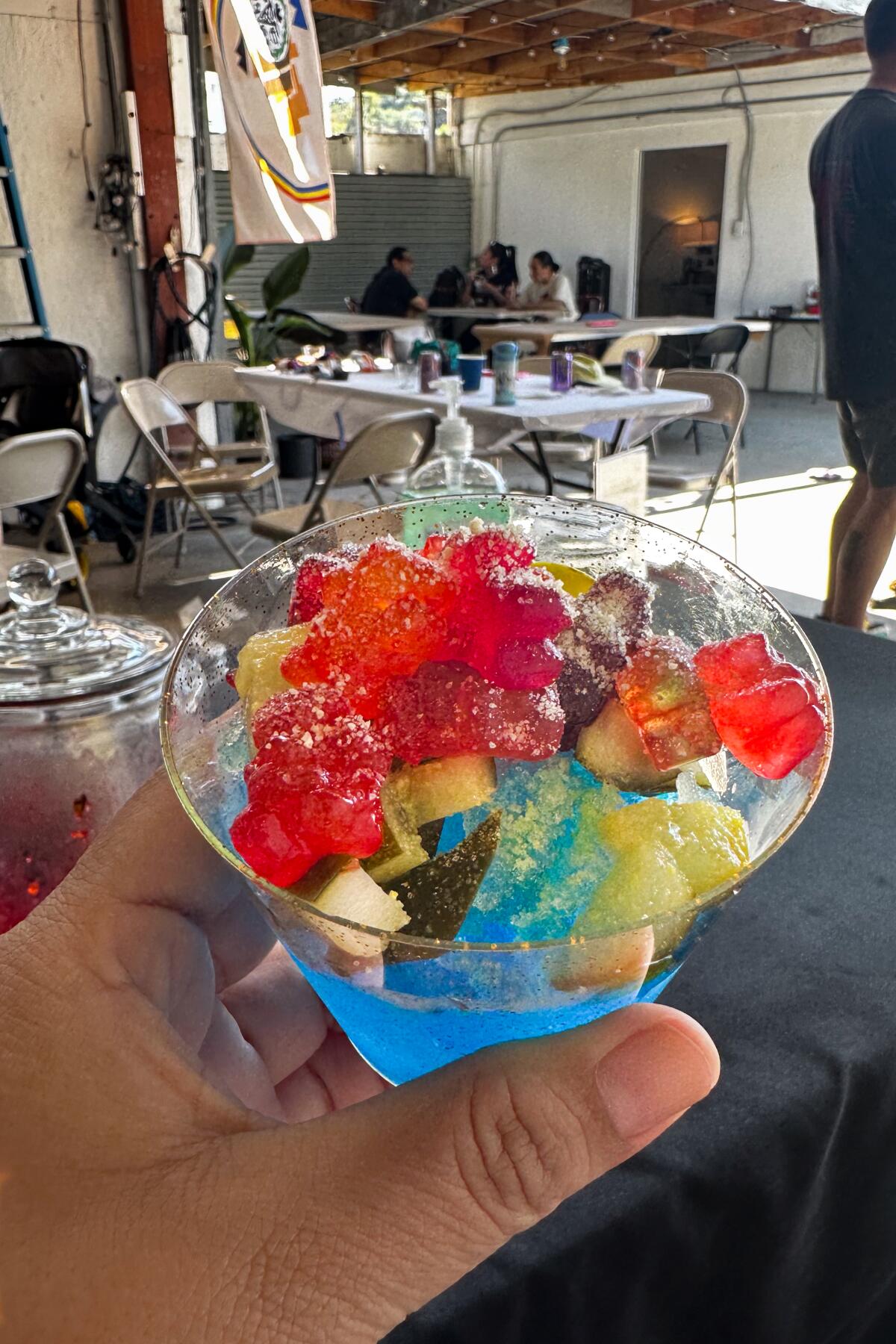
This was Due’s first piccadilly, a delicacy whose origins are debated, but can be traced to either the Navajo, the Tohono O’odham Reservation, or the Hopi village Moenkopi. Wherever they came from, they exploded in popularity on the Navajo reservation around 2018. Yellowhair, who is Diné — the word Navajo people use to identify themselves — grew up in Downey, but has family on the reservation and visits frequently. She was introducing the sweet treat to visitors at a new Indigenous community center and exhibition space called the Chapter House.
After taking a bite, Due contemplated the flavor.
“It’s sweet, and a little bit sour, and salty from the pickles,” she said. “It’s a nice combination of all the flavors. It’s fantastic.”
Due, 31, is Cherokee and a member of the Pawnee Nation of Oklahoma. The nonprofit worker, who lived in Los Angeles for five years before moving to Tulsa, couldn’t miss an opportunity to check out the Chapter House on her latest visit to California.
The teal building is located on a noisy stretch of Glendale Boulevard just off the 2 Freeway. In its front room you can find the center’s summer art exhibition, “Diary of a Native Femme(nist)” by artist Kimberly Robertson. But it’s the building’s tranquil, shaded outdoor space out back where most community gatherings take place. The day I visited, about a dozen Indigenous Angelenos compared the colors of their tongues, newly dyed blue and red from their piccadilly syrup, as music from native bands like Redbone and the Halluci Nation drowned out the cityscape. A gaggle of small children waved bubble wands and ran circles around a kid-sized, Barbie-pink Cybertruck.
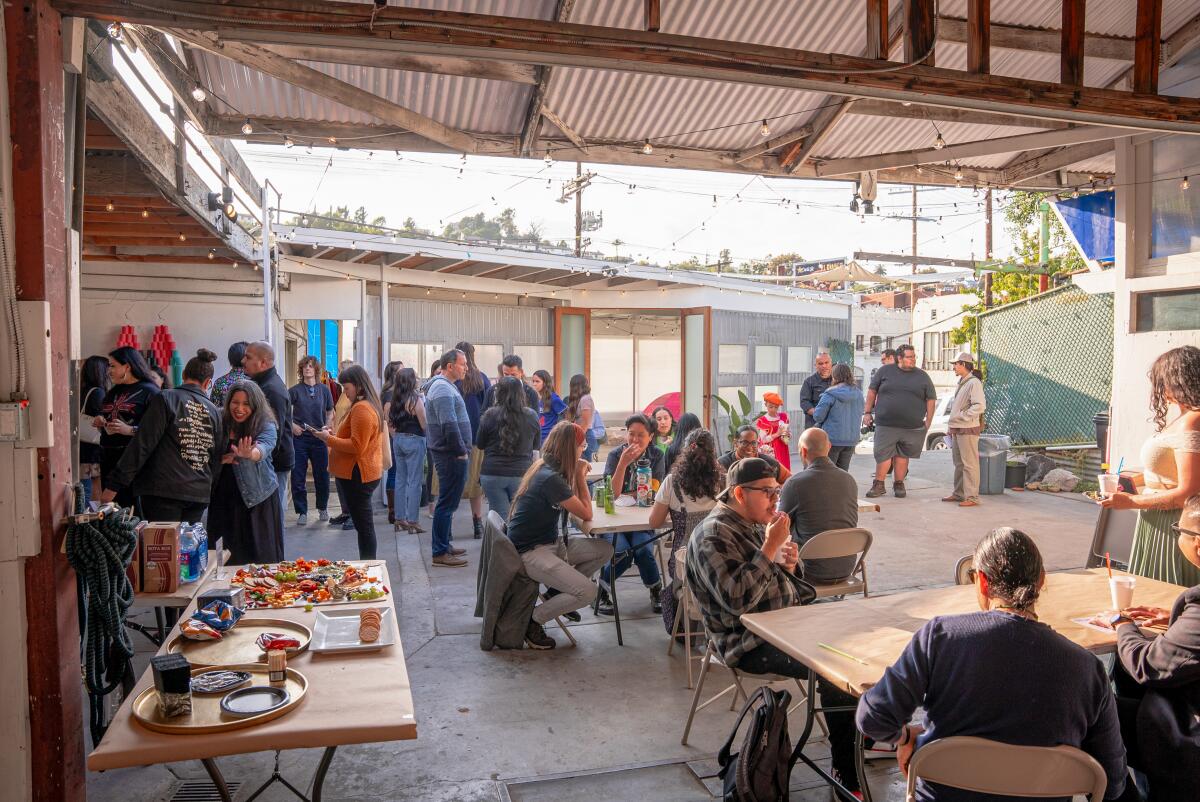
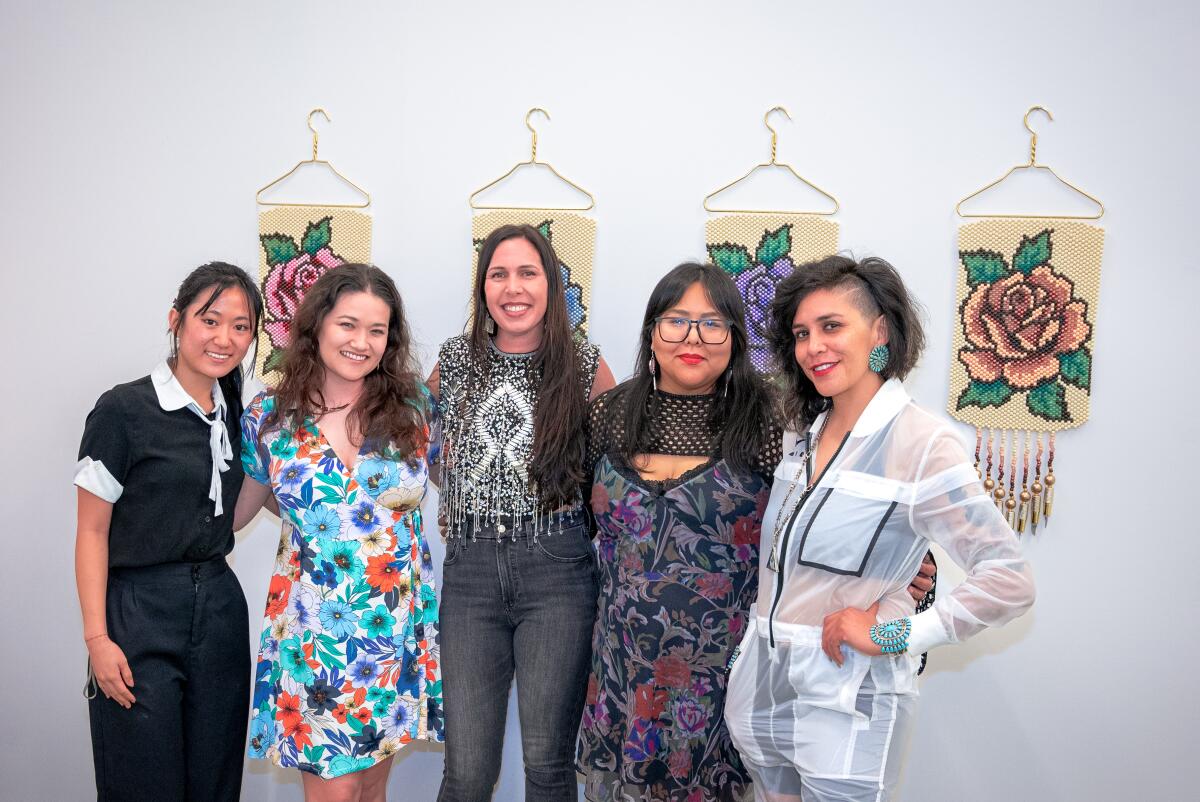
“I went to school out here for a while, and I was always hoping for more community,” Due said. “I think it really came to life once I left town.”
Nearly 400,000 people in Los Angeles County identify as partly American Indian or Alaskan Native, according to the 2020 census. That makes it one of the largest urban Indigenous populations in the nation.
“We’re all unique, and we’re all from different tribes, different nations, but we all were craving the space to come together, recharge and heal.”
— Emma Robbins, Chapter House founder
Despite this, Chapter House founder Emma Robbins (Diné) says there are very few places for the Indigenous to gather socially in the city. The Gabrielino/Tongva people, the original people of Los Angeles, are not yet a federally recognized tribe, and therefore do not have a reservation nearby that could function as a centralized hub.
Before the Chapter House opened, Indigenous Angelenos would see each other at a handful of annual events at the Autry Museum of the American West, like the powwow hosted by the nonprofit United American Indian Involvement.
UAII also provides social services for the urban native population, and community members would sometimes bump into acquaintances while waiting for a doctor’s appointment at the clinic. But the events at the Autry were too infrequent to nurture a sense of belonging. And other Indigenous L.A. residents interviewed for this story said that they found it too awkward to connect in the UAII’s waiting room.
For the record:
11:49 a.m. Sept. 9, 2024The sentiment that it was awkward to connect in the USII’s waiting room was incorrectly attributed to Emma Robbins. Other Indigenous L.A. residents, including Joey Clift, shared this view.
Though UAII also offers community programming for families, youth and elders, there aren’t as many events geared toward young, creative Natives. To fill this gap, Robbins sought to create a casual, artistic community space with year-round programming.
The Chapter House was founded virtually in 2020 by Robbins, who grew up on the Navajo Reservation, which sprawls across Arizona, New Mexico and Utah. There, the center of social life takes place at so-called chapter houses, community centers unique to the Navajo nation. They are where people distribute food and water, facilitate town halls, see art, experience cultural celebrations, throw parties and hold funerals. There are 110 chapter houses distributed across the reservation, and Robbins jokes that the Los Angeles Chapter House, which opened its physical space in the fall of 2023, is the 111th.
“Navajo rez is what I know,” Robbins said. “But I think working with California natives — specifically Tongva and Chumash folks from the area — is really important because, although we are Navajo- or Diné-led, it’s important to be inclusive of all Natives.

“We’re all unique, and we’re all from different tribes, different nations, but we all were craving the space to come together, recharge and heal,” Robbins said. “We also bring things to our community that we might not historically have had access to, like art shows, or yoga classes or even just good Wi-Fi.”
Robbins founded the Chapter House on four pillars: wellness, community, art and nature. In addition to the frequent piccadilly socials, they’ve held events like a Métis (Michif) finger weaving lesson, plant medicine workshops, screenings of the new seasons of Netflix’s Indigenous-forward animated children’s show “Spirit Rangers” and drag story hour with Landa Lakes (Chickasaw) and Lady Shug (Diné).
Joey Clift, a Cowlitz comedian and television writer, first discovered the Chapter House in July 2023 through a bolo tie-making workshop, which helped him transform a hand-beaded Garfield medallion, made by Cree beadworker Sweet Grass by Heather, into something he could wear.
I feel like I don’t have to try to be something that I’m not. We all uplift each other, and inspire each other, and help each other.
— Burgandi Trejo Phoenix, Yaqui actress and Chapter House visitor
He said the Chapter House reminded him of a bygone era of 1930s Hollywood that he had read about, in which the Indian American Art Shop, located across the street from Grauman’s Chinese Theatre, was the unofficial hangout spot for Native American actors like Jim Thorpe, member of the Sac and Fox Nation, and a gold medalist Olympian turned Western star. Until Clift found the Chapter House, he could only dream of these spaces from the past.
Clift would go on to join the community center’s board, with hopes to reignite the young Indigenous creative scene.
“I think that there are a lot of really great spaces for elders in Los Angeles to participate in and practice culture,” Clift, 40, said. “But I don’t feel like there are a lot of spaces for Native millennials and zoomers. That’s something that really excited me about the Chapter House. It’s for all ages, but it really does feel like it’s on the pulse of the really great artistic gains that Native folks are doing now.”
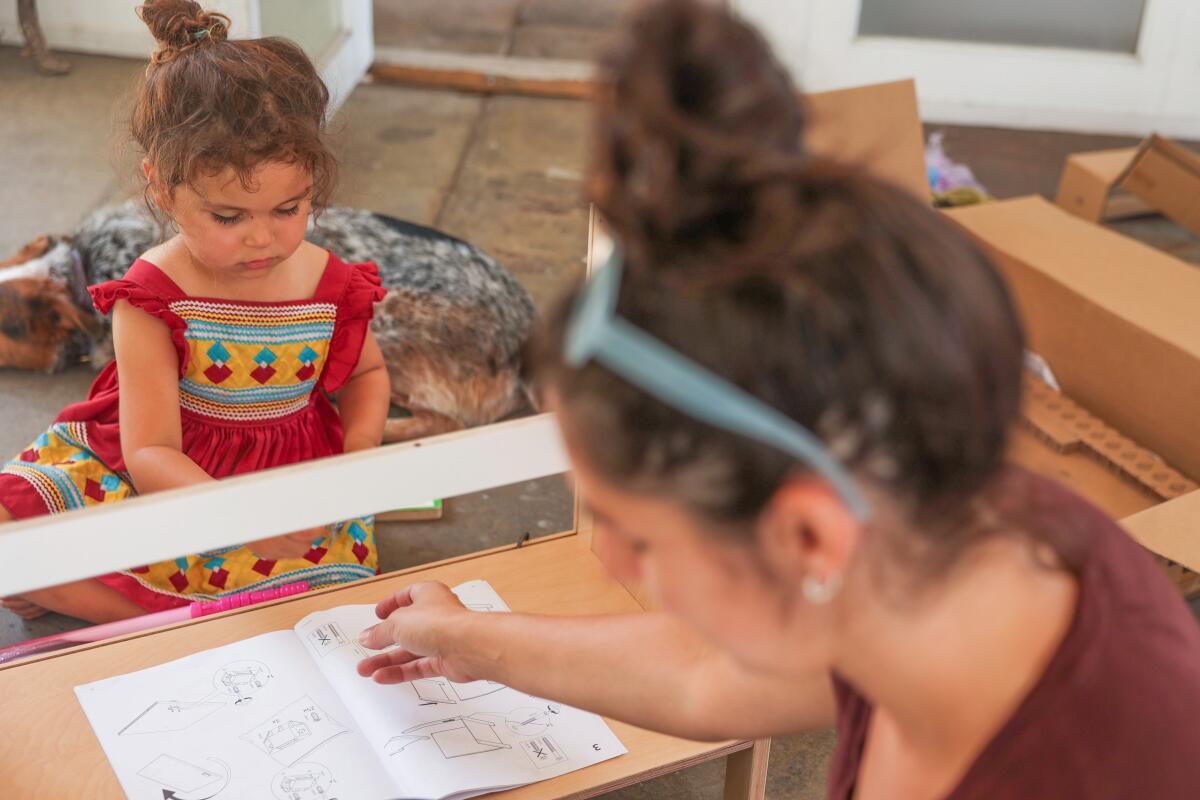
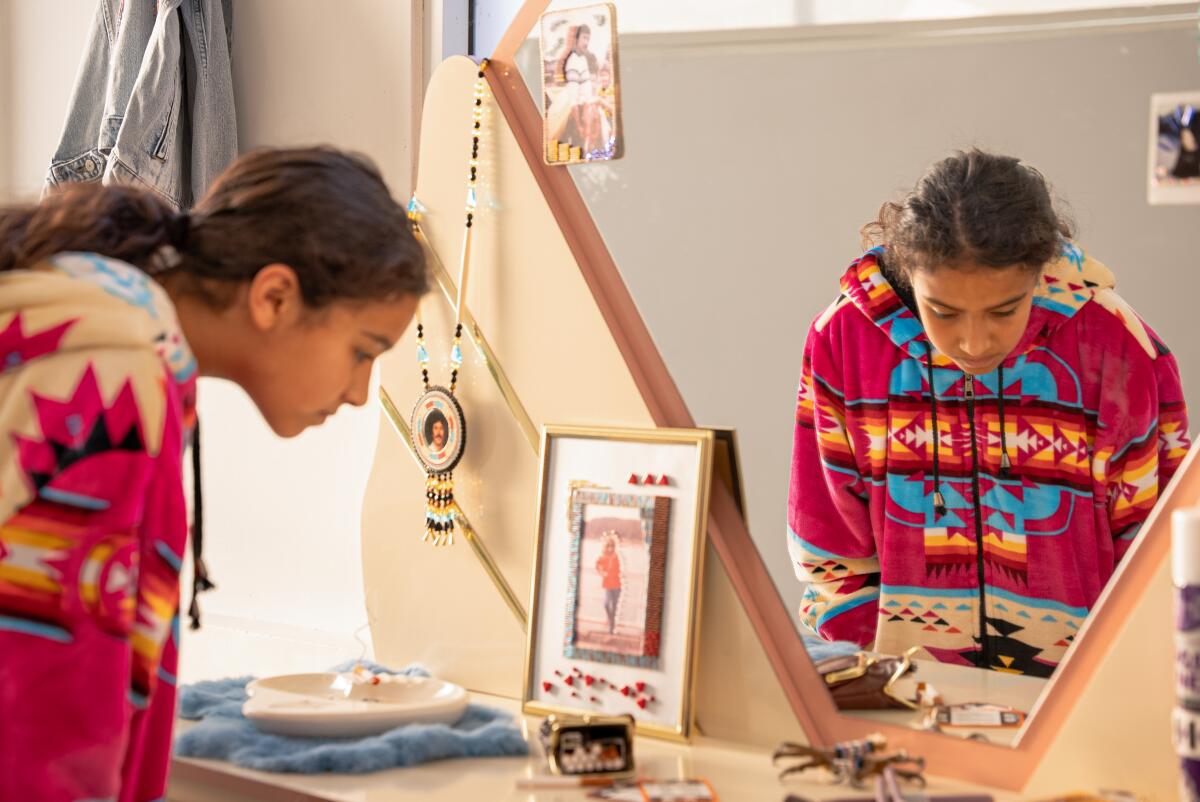
The space also is helping young Indigenous people connect to their culture for the first time. Burgandi Trejo Phoenix, an Yaqui actress who voices a character named Squash in “Spirit Rangers,” first connected with the Chapter House when it screened the Season 4 finale of the kids show in April. She immediately felt embraced by the community, even though she wasn’t brought up with her Yaqui traditions.
“I feel like I don’t have to try to be something that I’m not,” Phoenix said. “We all uplift each other, and inspire each other, and help each other.”
Through promoting events at UAII, on Instagram and through word of mouth, Chapter House is building a loyal following. Their events, which are always free and open to the public, regularly attract around 20 to 25 people — but 200 packed the house for the La La Land Back Tour drag show it co-hosted last November. While most people who come identify as Indigenous, Robbins emphasizes that the Chapter House is welcoming of allies too.
“This is definitely a Native space by Natives for Natives,” Robbins said, “We want people to come, learn and experience what it’s like when we come together and build this beautiful Indigenous future.”
Sign up for The Wild
We’ll help you find the best places to hike, bike and run, as well as the perfect silent spots for meditation and yoga.
You may occasionally receive promotional content from the Los Angeles Times.